Jinru Ding
LLM-Mini-CEX: Automatic Evaluation of Large Language Model for Diagnostic Conversation
Aug 15, 2023Abstract:There is an increasing interest in developing LLMs for medical diagnosis to improve diagnosis efficiency. Despite their alluring technological potential, there is no unified and comprehensive evaluation criterion, leading to the inability to evaluate the quality and potential risks of medical LLMs, further hindering the application of LLMs in medical treatment scenarios. Besides, current evaluations heavily rely on labor-intensive interactions with LLMs to obtain diagnostic dialogues and human evaluation on the quality of diagnosis dialogue. To tackle the lack of unified and comprehensive evaluation criterion, we first initially establish an evaluation criterion, termed LLM-specific Mini-CEX to assess the diagnostic capabilities of LLMs effectively, based on original Mini-CEX. To address the labor-intensive interaction problem, we develop a patient simulator to engage in automatic conversations with LLMs, and utilize ChatGPT for evaluating diagnosis dialogues automatically. Experimental results show that the LLM-specific Mini-CEX is adequate and necessary to evaluate medical diagnosis dialogue. Besides, ChatGPT can replace manual evaluation on the metrics of humanistic qualities and provides reproducible and automated comparisons between different LLMs.
MedGPTEval: A Dataset and Benchmark to Evaluate Responses of Large Language Models in Medicine
May 12, 2023



Abstract:METHODS: First, a set of evaluation criteria is designed based on a comprehensive literature review. Second, existing candidate criteria are optimized for using a Delphi method by five experts in medicine and engineering. Third, three clinical experts design a set of medical datasets to interact with LLMs. Finally, benchmarking experiments are conducted on the datasets. The responses generated by chatbots based on LLMs are recorded for blind evaluations by five licensed medical experts. RESULTS: The obtained evaluation criteria cover medical professional capabilities, social comprehensive capabilities, contextual capabilities, and computational robustness, with sixteen detailed indicators. The medical datasets include twenty-seven medical dialogues and seven case reports in Chinese. Three chatbots are evaluated, ChatGPT by OpenAI, ERNIE Bot by Baidu Inc., and Doctor PuJiang (Dr. PJ) by Shanghai Artificial Intelligence Laboratory. Experimental results show that Dr. PJ outperforms ChatGPT and ERNIE Bot in both multiple-turn medical dialogue and case report scenarios.
Meta-Path-Free Representation Learning on Heterogeneous Networks
Feb 16, 2021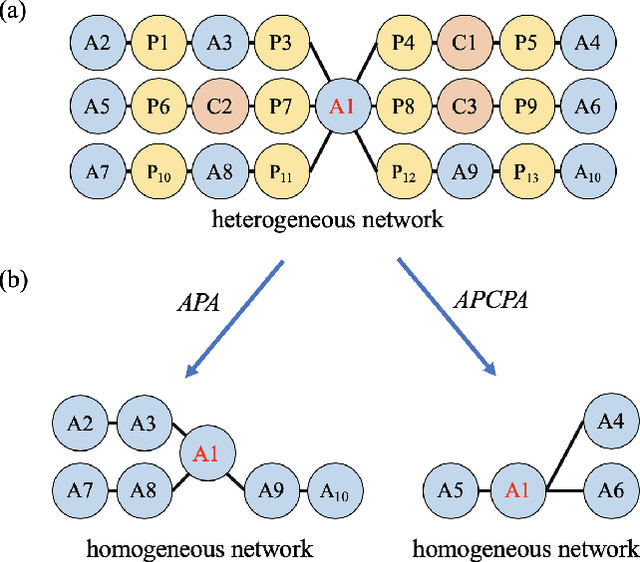
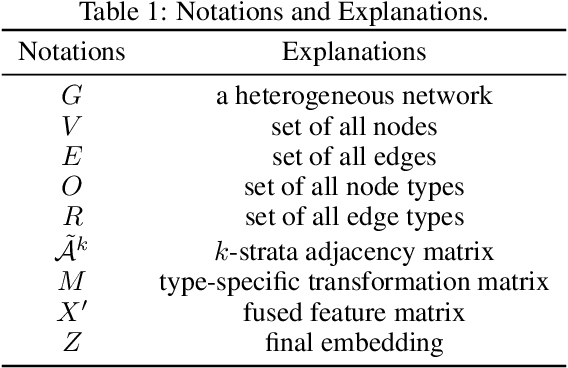
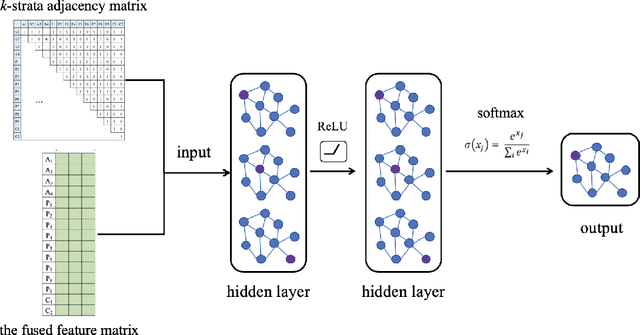

Abstract:Real-world networks and knowledge graphs are usually heterogeneous networks. Representation learning on heterogeneous networks is not only a popular but a pragmatic research field. The main challenge comes from the heterogeneity -- the diverse types of nodes and edges. Besides, for a given node in a HIN, the significance of a neighborhood node depends not only on the structural distance but semantics. How to effectively capture both structural and semantic relations is another challenge. The current state-of-the-art methods are based on the algorithm of meta-path and therefore have a serious disadvantage -- the performance depends on the arbitrary choosing of meta-path(s). However, the selection of meta-path(s) is experience-based and time-consuming. In this work, we propose a novel meta-path-free representation learning on heterogeneous networks, namely Heterogeneous graph Convolutional Networks (HCN). The proposed method fuses the heterogeneity and develops a $k$-strata algorithm ($k$ is an integer) to capture the $k$-hop structural and semantic information in heterogeneous networks. To the best of our knowledge, this is the first attempt to break out of the confinement of meta-paths for representation learning on heterogeneous networks. We carry out extensive experiments on three real-world heterogeneous networks. The experimental results demonstrate that the proposed method significantly outperforms the current state-of-the-art methods in a variety of analytic tasks.
Entity Profiling in Knowledge Graphs
Feb 29, 2020
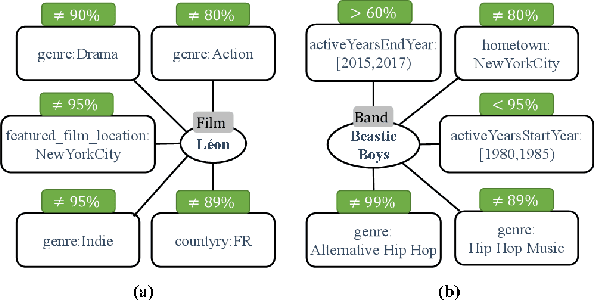
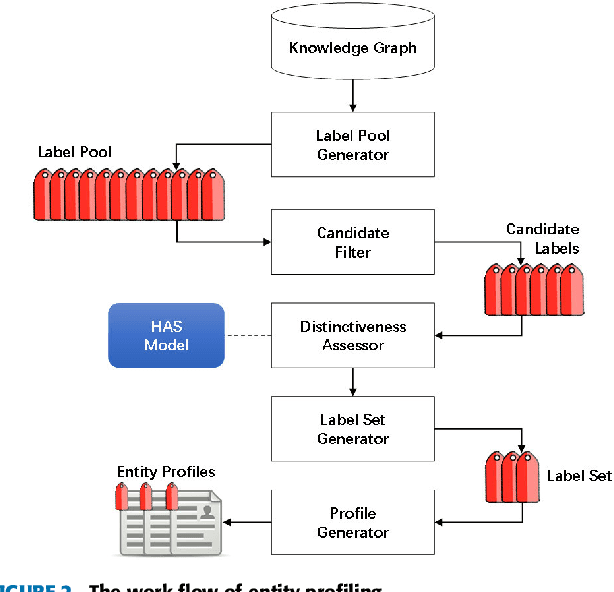

Abstract:Knowledge Graphs (KGs) are graph-structured knowledge bases storing factual information about real-world entities. Understanding the uniqueness of each entity is crucial to the analyzing, sharing, and reusing of KGs. Traditional profiling technologies encompass a vast array of methods to find distinctive features in various applications, which can help to differentiate entities in the process of human understanding of KGs. In this work, we present a novel profiling approach to identify distinctive entity features. The distinctiveness of features is carefully measured by a HAS model, which is a scalable representation learning model to produce a multi-pattern entity embedding. We fully evaluate the quality of entity profiles generated from real KGs. The results show that our approach facilitates human understanding of entities in KGs.
* 10 pages, 5 figures
 Add to Chrome
Add to Chrome Add to Firefox
Add to Firefox Add to Edge
Add to Edge